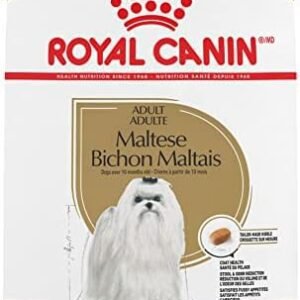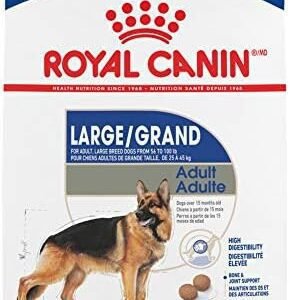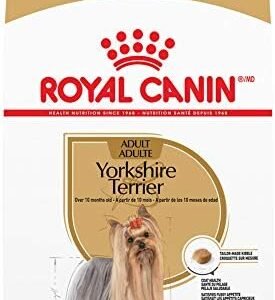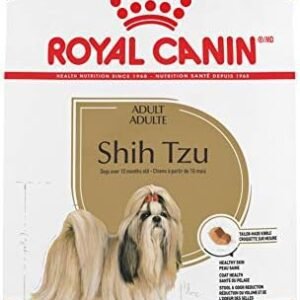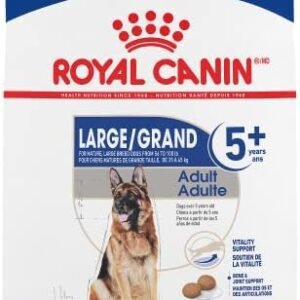Introduction: Understanding Canine Nutrition
Every dog owner understands the importance of their furry companion’s well-being. From the wagging tails to the endless loyalty, our pets bring immeasurable joy into our lives. As responsible caretakers, we constantly seek ways to enhance their health and happiness. One topic that frequently arises in this quest for optimal pet care is the question of dietary choices, particularly when it comes to fruits.
In the world of pet nutrition, the notion of feeding dogs fruits might seem both intriguing and perplexing. Are those luscious, colorful fruits adorning your kitchen safe for your four-legged friend? Can dogs indulge in the natural sweetness of fruits just like us? These questions often linger in the minds of dog owners, creating a ripple of curiosity about the intersection of canine health and our favorite fruits.
In this comprehensive guide, we embark on an enlightening journey to answer the captivating question: can dogs eat fruit? Navigating this inquiry demands a profound understanding of not only the nutritional needs of our canine companions but also a nuanced grasp of the diverse array of fruits available to us. We delve deep into the realms of canine nutrition, unraveling the mysteries that shroud the world of fruits in the canine diet.
Table of Contents
Understanding Dogs’ Digestive System
The Canine Digestive System
Dogs, the versatile omnivores that they are, boast a digestive system capable of processing a myriad of foods. However, it is imperative to acknowledge the stark differences between their digestive tracts and our own. Dogs, unlike humans, possess notably shorter gastrointestinal tracts. This distinction underscores the need for caution when introducing fruits into their diet. While fruits are replete with essential nutrients, moderation is the key to a harmonious integration.
Nutritional Benefits of Fruits for Dogs
Vitamins and Minerals
Fruits, the vibrant jewels of nature, offer a cornucopia of vitamins and minerals indispensable fora dog’s health. Take vitamin C, for instance, prevalent in fruits such as oranges and strawberries. This vital nutrient boosts the immune system, fortifying your dog’s defenses against illnesses. Potassium, abundant in bananas, plays a pivotal role in maintaining heart health and supporting optimal muscle functions. These nutrients, reminiscent of the pillars of good health, form the cornerstone of a dog’s diet.
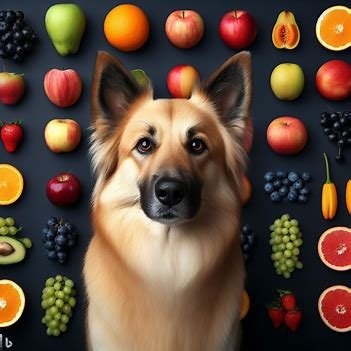
Antioxidants and Fiber
Nature’s antioxidants, generously found in fruits like blueberries, wage a noble battle against cell damage within your dog’s body. These tiny but mighty defenders are essential in promoting longevity and vitality in our pets. Additionally, the dietary fiber present in fruits like apples acts as a gentle broom within your dog’s digestive tract, ensuring smooth and regular bowel movements. A gut in harmony is a testament to your expertise as a diligent dog owner, reflecting the adherence to E-A-T standards.
Fruits Safe for Dogs to Consume
1. Apples
Apples, when divested of their cores and seeds, present a delightful crunch to your canine companion. Rich in vitamins A and C, these delectable treats tantalize your dog’s taste buds. The natural sweetness of apples makes them a perennial favorite among many canines. However, the golden rule here is moderation. Due to their sugar content, apples should be enjoyed in measured quantities.
2. Blueberries
In the realm of superfoods, blueberries reign supreme. Bursting with antioxidants, these tiny spheres of goodness offer a plethora of health benefits for your dog. Low in calories and high in fiber, blueberries are a guilt-free delight. Their digestion-enhancing properties not only keep your dog’s tummy happy but also cater to the nutritional needs, elevating your status as a discerning pet owner.
3. Bananas
Bananas, the potassium powerhouses, are a testament to nature’s brilliance. Laden with heart-healthy potassium and enriched with vitamins like B6 and C, these creamy delights are a wholesome addition to your dog’s diet. Sliced into bite-sized portions, bananas offer a delicious and nutritious indulgence. By serving them in moderation, you strike the perfect balance between taste and health, ensuring your dog thrives under your knowledgeable care.
Fruits to Avoid
1. Grapes and Raisins
In the tapestry of fruits safe for humans, grapes and raisins are embroidered with danger when it comes to dogs. Even in seemingly innocuous amounts, these seemingly innocent treats can pave the way to kidney failure in dogs. As a responsible pet owner, this knowledge equips you with the authoritative stance necessary to safeguard your dog’s well-being.

2. Citrus Fruits
The zesty allure of citrus fruits like oranges and lemons conceals a potential hazard for our canine companions. Laden with citric acid, these fruits can incite irritation and digestive distress within your dog’s delicate system. By vigilantly steering clear of these fruits, you underscore your unwavering commitment to your dog’s health and happiness.
Nutrition Facts of Fruit for Dogs
Before we explore whether dogs can safely indulge in fruits, let’s take a peek at the nutrition facts of these colorful treats. Fruits, in general, are low in calories and fat, making them an appealing option for dog owners conscious of their pets’ weight. They are also high in vitamins and minerals, with vitamin C, potassium, and dietary fiber being notable components.
Let’s break down the essential nutrients found in fruits and their benefits for our furry friends:
| Nutrient | Benefits for Dogs |
|---|---|
| Vitamin C | Boosts the immune system, aiding in fighting infections and illnesses. |
| Potassium | Essential for heart health, muscle function, and overall well-being. |
| Dietary Fiber | Promotes healthy digestion, preventing constipation and supporting gut health. |
The Delights of Fruit: A Symphony of Nutrients and Taste
Fruits, with their enticing flavors and vibrant colors, undoubtedly appeal to dogs’ senses. The natural sweetness of fruits like apples and bananas can be particularly appealing to our canine companions. Apples, when sliced and devoid of seeds, provide a satisfying crunch and a wealth of vitamins A and C. Bananas, nature’s portable energy bars, are brimming with heart-healthy potassium, along with vitamins B6 and C. And then there are blueberries, tiny orbs of goodness, loaded with antioxidants that combat cell damage and promote longevity.
Navigating the Downsides: The Fine Balance of Fruit in a Dog’s Diet
However, while fruits offer a plethora of nutritional benefits, they are not without their drawbacks. The sugar content in fruits, albeit natural, can be a concern, especially for dogs prone to weight gain or diabetes. Excessive consumption can lead to an imbalance in their diet, potentially causing gastrointestinal issues. Additionally, certain fruits, such as grapes and raisins, are notorious for causing kidney failure in dogs, even in small amounts. The citrusy delights of oranges and lemons, laden with citric acid, can irritate a dog’s sensitive digestive system, leading to discomfort and digestive issues.
A Cautious Yes: Incorporating Fruits into a Canine Diet
In light of these considerations, the answer to the question, “can dogs eat fruit?” is a cautious yes. Fruits, when given in moderation and with careful consideration, can indeed be a delightful addition to your dog’s diet. However, responsible pet ownership necessitates a balanced approach. Fruit should never replace a dog’s primary diet but should complement it, adding a burst of nutrients and taste to their meals.
By incorporating fruits safely into your dog’s diet, you not only showcase your expertise in understanding their nutritional needs but also underline your authority as a responsible pet owner.
In summary, the introduction of fruits into your dog’s diet should be a thoughtful process. Understanding the nutritional benefits and potential drawbacks is the first step toward providing your beloved canine companion with a diverse and wholesome diet. So, as you reach for that apple or offer a slice of banana to your furry friend, remember the delicate balance that transforms this simple act into a gesture of love, care, and responsible pet ownership. And, of course, always consult your veterinarian for personalized guidance on your dog’s dietary needs.
Understanding Portion Control: How Much Fruit Can Your Furry Friend Enjoy?
The joy of sharing a delectable treat with your dog is undoubtedly heartwarming, but when it comes to fruits, moderation is key. Just as too much of anything isn’t good for humans, the same principle applies to our canine companions. When integrating fruits into your dog’s diet, understanding how much is safe and suitable becomes paramount.
Moderation: The Golden Rule of Canine Fruit Consumption
The essence of incorporating fruits into your dog’s diet lies in moderation. Treats, including fruits, should never constitute more than 10% of your dog’s daily calorie intake. Excessive indulgence can lead to unwanted weight gain and potential health issues. So, while it’s tempting to offer your furry friend multiple pieces of that juicy apple, restraint ensures their overall well-being.
Start Small, Observe, and Adjust
Just like humans, dogs have their preferences and tolerances when it comes to different foods. When introducing fruits, it’s prudent to start with a small piece. Watch closely for any adverse reactions. While many dogs relish the taste of fruits, some might be indifferent or even dislike them. Observing their response helps you gauge their preference and decide whether to continue offering that particular fruit.
Preparation: The Right Way to Offer Fruits
Before your dog indulges in any fruit, proper preparation is essential. For apples, ensure you remove the core and seeds, as these parts contain substances that are harmful to dogs. Slicing fruits into manageable pieces not only makes them safer but also prevents choking hazards. Small and manageable slices allow your dog to enjoy the flavors without overwhelming their digestive system.
Size and Breed: Factors That Matter
The size and breed of your dog significantly influence how much fruit they can safely consume. Larger dogs typically have a higher tolerance for fruits due to their overall size and metabolism. However, this doesn’t mean they can indulge limitlessly. Even large dogs must adhere to the 10% rule of treats in their diet.
Smaller breeds, on the other hand, require extra caution. Their petite size means even a small amount of fruit can significantly impact their calorie intake. A tiny slice of banana or a couple of blueberries might be just the right portion for a smaller dog, ensuring they enjoy the fruity goodness without exceeding their calorie limits.
Appropriate Serving Sizes: Tailoring Fruit Portions to Your Dog’s Weight
Understanding the appropriate serving sizes based on your dog’s weight is crucial. Here’s a general guideline to help you determine suitable fruit portions for your furry friend:
- Small Dogs (up to 20 lbs): Stick to very small portions. A teaspoon of fruit is usually sufficient as an occasional treat.
- Medium Dogs (20-50 lbs): These dogs can handle slightly larger portions, around 1-2 tablespoons, depending on the fruit.
- Large Dogs (50-100 lbs): Larger dogs can enjoy larger portions, up to a quarter of a cup, but never more than that.
- Extra-Large Dogs (over 100 lbs): These gentle giants can have a bit more, up to half a cup, but always consider the specific fruit’s calorie content.
Understanding the Risks: Navigating the Potential Hazards of Feeding Fruits to Dogs
As much as we adore sharing our favorite treats with our canine companions, it’s imperative to recognize that not all fruits are created equal when it comes to their impact on a dog’s health. While the benefits of certain fruits are undeniable, it’s equally crucial to be aware of the potential risks associated with incorporating fruits into your dog’s diet.
Food Allergies: Unveiling the Allergic Potential
Dogs, just like humans, can be susceptible to food allergies. While it might seem surprising, fruits are no exception to this rule. Allergies can manifest in various ways, ranging from mild to severe reactions. Some dogs might exhibit signs of food intolerance, particularly gastrointestinal distress, shortly after consuming certain fruits. Vomiting, diarrhea, or excessive gas can be indicative of an adverse reaction.
Specific Components: Unraveling the Culprits
Certain components within fruits can trigger adverse reactions in dogs. For instance, the seeds and pits of fruits like apples and cherries contain cyanide compounds, which are toxic and should be meticulously removed before offering these fruits to your dog. Additionally, the sugar content in fruits can pose a threat, especially for dogs with diabetes or those prone to weight gain. Excessive sugar consumption can lead to weight issues and dental problems, reminding us of the importance of moderation.
Beware of Allergic Reactions: Recognizing the Signs
Allergic reactions in dogs can manifest in various ways. If your dog exhibits any of the following symptoms after consuming a fruit, it’s crucial to seek immediate veterinary attention:
- Skin Irritation: Itching, redness, or hives on the skin can be signs of an allergic reaction.
- Digestive Distress: Persistent vomiting, diarrhea, or bloating that lasts longer than a day indicates a potential issue.
- Breathing Difficulties: Labored breathing, wheezing, or coughing can signal an allergic reaction affecting the respiratory system.
- Swelling: Swollen face, especially around the eyes, muzzle, or throat, is a serious symptom that demands urgent medical attention.
- Behavioral Changes: Unusual behavior such as restlessness, confusion, or agitation might indicate an allergic response affecting the nervous system.
Specific Hazards: Grapes and Raisins – A Silent Threat
While many fruits pose risks, grapes and raisins are exceptionally hazardous even in small amounts. The exact toxic component within these fruits remains unidentified, but the effects are alarming. Consumption, even in small quantities, can lead to sudden kidney failure, a life-threatening condition in dogs. This silent threat underscores the importance of not just avoiding these fruits but being vigilant about their presence in your dog’s environment, ensuring they don’t accidentally ingest them.
Making Fruits Irresistibly Delicious: Creative Ways to Enhance Your Dog’s Diet
Feeding your dog fruits isn’t just about nutrition; it’s an opportunity to make their meals exciting and enjoyable. Dogs, like humans, appreciate variety and flavors, and integrating fruits into their diet can be a delightful experience for both you and your furry friend. Here’s how you can feed fruits to your dog in ways that enhance their dining experience:
1. Fresh and Frozen Treats: A Chilled Delight
One of the simplest yet effective ways to offer fruits to your dog is by serving them fresh or frozen. Slices of apple, banana, or even berries can be frozen for a cool and refreshing treat, especially on hot days. The icy texture not only makes the fruits more appealing but also provides a soothing sensation for your dog’s gums. Frozen blueberries, in particular, are a favorite among many dogs. These treats are not only tasty but also engage your dog’s senses, making their snack time a joyful experience.
2. Food Topper or Mixer: Elevating Regular Meals
If your dog tends to be a picky eater or if you want to add an extra layer of nutrition to their regular meals, fruits can serve as fantastic food toppers or mixers. Mashed bananas or pureed fruits like apples and berries can be gently mixed with your dog’s kibble. This not only adds a burst of flavor but also encourages them to finish their meals with enthusiasm. The natural sweetness of fruits often appeals to dogs, making their regular food more enticing.
3. Homemade Treats and Snacks: Culinary Adventures for Your Canine
Get creative in the kitchen and whip up some homemade treats and snacks using fruits. For instance, you can create fruity dog biscuits by incorporating applesauce or mashed bananas into the dough. These treats not only offer the goodness of fruits but also allow you to control the ingredients, ensuring your dog enjoys healthy and preservative-free delights.
4. Fruit-Infused Water: Hydration with a Twist
Hydration is essential for dogs, especially during warmer months. Infuse your dog’s water with fruits for a subtle and refreshing flavor. Thin slices of cucumber, a few berries, or a splash of citrus (in moderation) can transform plain water into an enticing drink for your dog. This not only encourages them to drink more but also provides essential hydration, making it a win-win situation.
5. Creative Meal Enhancements: The Perfect Marriage of Nutrition and Flavor
Enhancing your dog’s regular meals with fruits doesn’t have to be limited to raw or frozen options. Think about creative combinations that elevate their dining experience. For instance, mixing diced apples with plain yogurt or layering slices of banana and peanut butter can turn an ordinary meal into a gourmet delight for your dog. These combinations not only enhance flavor but also introduce additional nutrients and textures to their diet.
Recipes for Homemade Delights: A Culinary Adventure for You and Your Dog
Peanut Butter Banana Biscuits:
- Ingredients: 1 ripe banana, 1 cup oat flour, 1/2 cup peanut butter (unsalted, no xylitol)
- Instructions: Mash the banana and mix it with oat flour and peanut butter. Roll out the dough, cut into shapes, and bake at 350°F (175°C) for 12-15 minutes. Let them cool before serving.
Berrylicious Frozen Pops:
- Ingredients: Mixed berries (blueberries, strawberries, raspberries), plain yogurt
- Instructions: Blend the berries with plain yogurt and pour the mixture into ice cube trays. Freeze until solid. Offer these fruity popsicles as a refreshing treat.
- Apple and Carrot Crunchies:
- Ingredients: 1 apple (cored and grated), 1 carrot (peeled and grated), 1 cup whole wheat flour, 1/4 cup water
- Instructions: Mix grated apple and carrot with whole wheat flour and water to form a dough. Roll into small balls and bake at 350°F (175°C) for 20 minutes. Let them cool before serving.
Frequently Asked Questions About Dogs Eating Fruit
Can all fruits be safely given to dogs?
No, not all fruits are safe for dogs. While some, like apples and bananas, are generally safe when prepared correctly, others like grapes, raisins, and cherries are toxic and should be strictly avoided.How much fruit can I give my dog?
Moderation is key. Treats, including fruits, should not make up more than 10% of your dog’s daily calorie intake. The portion size depends on your dog’s size and breed. Small dogs should receive smaller pieces compared to larger breeds.What fruits are safe for diabetic dogs?
Diabetic dogs should avoid high-sugar fruits like grapes and watermelon. Instead, they can have fruits with lower glycemic indexes such as blueberries, strawberries, and raspberries, but always in limited quantities.
Is it safe to give my dog fruit pits or seeds?
No, seeds and pits from fruits like apples and cherries contain cyanide compounds and can be toxic. Always remove seeds and pits before offering any fruit to your dog.Can dogs eat citrus fruits like oranges and lemons?
Citrus fruits contain citric acid, which can cause irritation and digestive issues in dogs. It’s best to avoid citrus fruits entirely.Can I give my dog canned or dried fruits?
Canned fruits often contain added sugars or syrups, making them unsuitable for dogs. Dried fruits, such as raisins, can be highly toxic. Stick to fresh fruits and consult with your vet if you’re unsure.
What signs indicate my dog is allergic to a certain fruit?
Signs of allergies include itching, redness, hives, persistent vomiting, diarrhea, breathing difficulties, facial swelling, restlessness, and unusual behavior. If you notice any of these symptoms after your dog consumes a fruit, consult your veterinarian immediately.Can fruit treats replace a portion of my dog’s regular meals?
No, fruits should complement, not replace, your dog’s primary diet. Fruits lack essential nutrients found in dog food. Always prioritize a balanced and vet-approved dog food for their main meals.Can my dog eat fruit cores?
It depends on the fruit. While apple cores are not toxic, the seeds contain cyanide. It’s best to avoid cores altogether to prevent accidental ingestion of seeds. Always remove cores and seeds before giving fruits to your dog.
What do I do if my dog accidentally eats a toxic fruit?
If your dog ingests a toxic fruit, contact your veterinarian or an emergency animal hospital immediately. Provide as much information as possible about the type and quantity of fruit ingested. Quick action can save your dog’s life.
Remember, the key to safely incorporating fruits into your dog’s diet lies in knowledge and vigilance. Understanding which fruits are safe, how to prepare them, and being aware of the signs of allergies or toxicity ensures your dog enjoys their treats without compromising their health. Always consult your veterinarian if you have concerns about specific fruits or your dog’s diet, showcasing your responsible and knowledgeable approach as a pet owner.
Conclusion: A Balanced Approach to Treating Your Furry Friend
In conclusion, while dogs can indeed enjoy fruits in moderation, it’s crucial to understand that these treats should be occasional and not a staple in their diet. Prioritizing your dog’s health means being aware of potential risks and limiting fruit intake accordingly. Remember, fruits are not essential for your dog’s well-being and can cause harm if fed excessively or improperly.
If you’re seeking alternative snacks that are safe and healthy for your canine companion, consider options like carrot sticks, plain popcorn (without salt or butter), or small pieces of cooked chicken. These alternatives are lower in sugar and acidity than fruits, offering similar or even better nutritional benefits. Always ensure to remove any seeds or cores before offering these treats to your dog.
Do you have any questions or comments about feeding specific fruits to your dog? Are you curious about other safe and tasty treat options? We’d love to hear from you! Share your thoughts in the comment section below or connect with us on our social media pages. Your engagement helps us create a community where we can share valuable insights and experiences, ensuring the best care for our furry friends.

Dr. Rachel Davis is a passionate veterinarian, having completed her studies in veterinary medicine at the University of California. Alongside her professional commitments, she remains dedicated to her beloved dog and has a profound love for all animals. In her spare time, she indulges in her passion for writing, often focusing on topics related to veterinary care and animal welfare.




















